This post contains affiliate links (I get a commission at no extra cost to you for purchases made through links in this post).
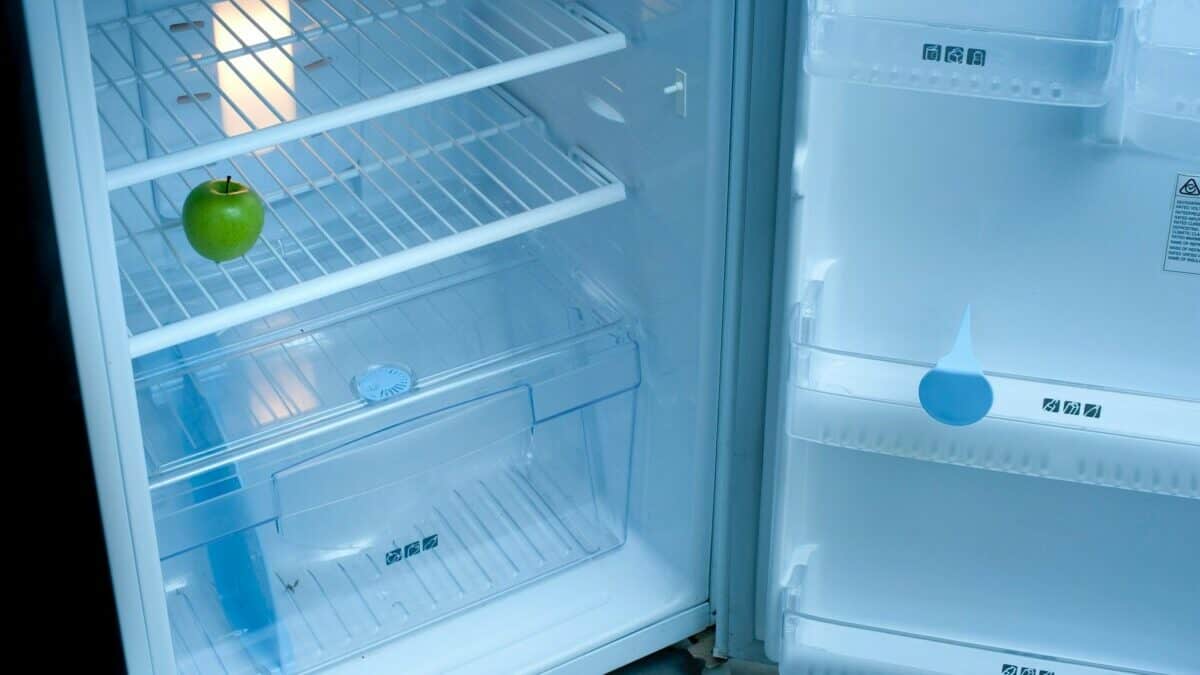
A regular household fridge that you can find in any electronic store is generally cheaper than a specialized motorhome, caravan, or RV fridge. So let’s find out if we can use a regular fridge inside a motorhome.
You can use a regular fridge in a motorhome, RV, or caravan if you can fit it inside and run it on your batteries via an inverter or if you are connected to electricity. Running it via an inverter consumes almost twice the electricity, so this option is not the best for being off the grid, but it can work.
To figure out if you can use a regular fridge in a motorhome, RV or caravan, there are a couple of things to consider before installing one. Things to factor in are size, power consumption, and what your electrical system is capable of, but don’t worry. We will figure this out in this article.
Let’s start by checking the energy consumption of the different refrigerators and how long you can run them on a 12v battery via an inverter.
How Long Can You Run a Residential Refrigerator in a Motorhome (RV)?
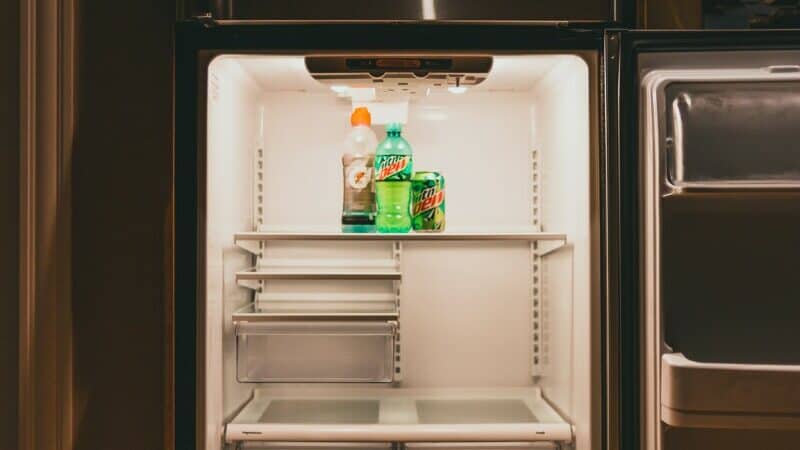
In the table below, I will make examples of fridges with different energy consumption, and I will stick to the lower end of the spectrum, 75 KWh – 250 KWh per year; they usually display the energy consumption on fridges by yearly consumption, so I will also do that. Often a cheap mini fridge can consume the same or more than a more expensive full-sized fridge. For this reason, I will not display sizes or different models but only the yearly energy consumption.
| Fridge, Yearly energy consumption: | Fridge Consumption Ampere/hour | *Energy Losses Inverter | Total Consumption Ampere/hour | Battery Runtime 100AH *(80AH) Lithium | Battery Runtime 100AH (*50AH) GEL/AGM |
| Fridge 75KWh/A | 0,71 AH | 1,57 AH | 2,28 AH | 35 hours | 21,9 hours |
| Fridge 100KWh/A | 0,95 AH | 1,59 AH | 2,54 AH | 31,5 hours | 19,6 hours |
| Fridge 125KWh/A | 1,18 AH | 1,61 AH | 2,79 AH | 28,7 hours | 17,9 hours |
| Fridge 150KWh/A | 1,42 AH | 1,64 AH | 3,06 AH | 26,1 hours | 16,3 hours |
| Fridge 175KWh/A | 1,66 AH | 1.66 AH | 3,32 AH | 24,1 hours | 15,1 hours |
| Fridge 200KWh/A | 1,9 AH | 1.69 AH | 3,59 AH | 22,3 hours | 13,9 hours |
| Fridge 225KWh/A | 2,14 AH | 1.71 AH | 3,85 AH | 20,8 hours | 13 hours |
| Fridge 250KWh/A | 2,37 AH | 1.73 AH | 4,1 AH | 19,5 hours | 12,2 hours |
* inverters typically consume 5-20% extra electricity during the conversion process due to inefficiency; I have added 10%. By being turned on, inverters consume 0.5 – 2 AH, and I have added 1,5 AH. This varies depending on inverters, but those average numbers are good to count on.
* Im counting with the most common depth of discharge (DOD) of 80% in the lithium battery; basically that the battery only has 80AH of usable energy. And a DOD of 50% in the gel/AGM battery. The depth of discharge or usable energy may differ between 50-70% on gel/AGM batteries and 80-100% on lithium batteries.
A big factor to keep in mind is that the inverter often uses more energy than the fridge does.
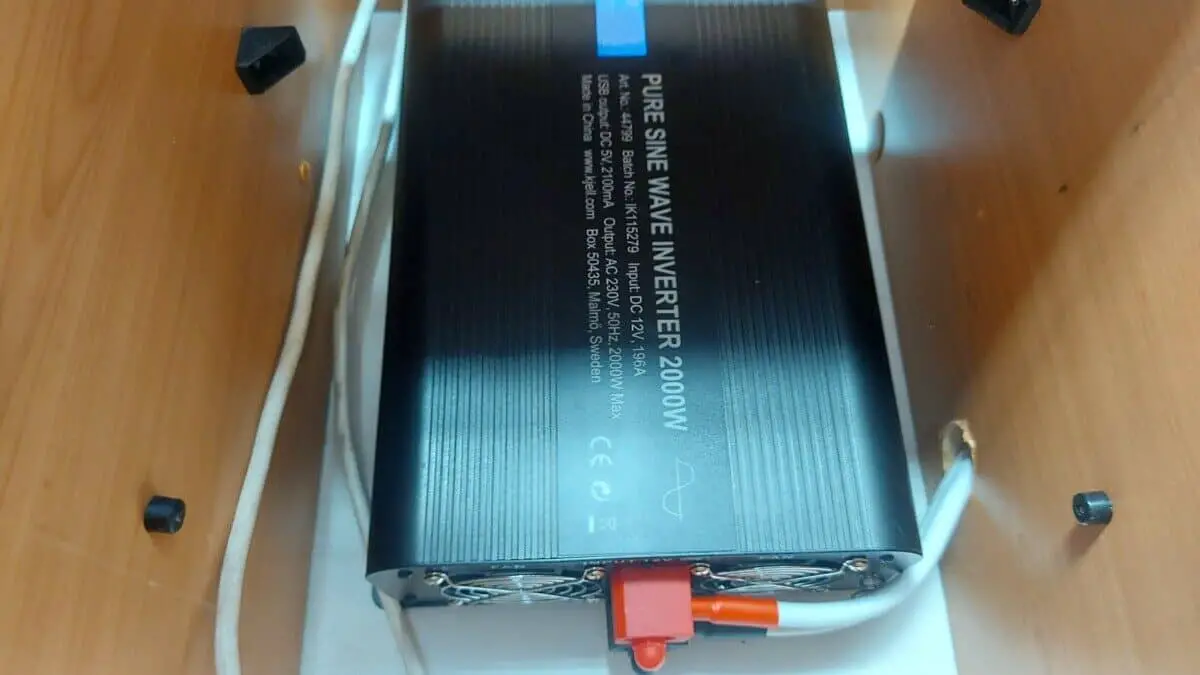
You can see from these numbers that you would need at least a 200 AH battery and some decent solar panels to run a regular fridge via an inverter while being off the grid or boondocking, but if you do as most people and go between campsites or places where you can connect to electricity you can easily use your battery bank to run a regular fridge while relocating.
If you, on the other hand, want to be off the grid most of the time and not driving much or using a generator, I would go for a 12 volts compressor fridge, they consume about the same as a regular fridge, but you won’t need to run an inverter which will double your battery life and also it gives you a good chance of charging it up on solar even if it’s cloudy a couple of days.
Are you wondering how much the solar panels or your engine generator charge up your batteries, or maybe you are starting to shift towards getting a 12-volt fridge instead? Either way, I recommend you to read my other article on how to get your fridge to run off the battery.
Can you Fit a Regular Fridge in a Motorhome?
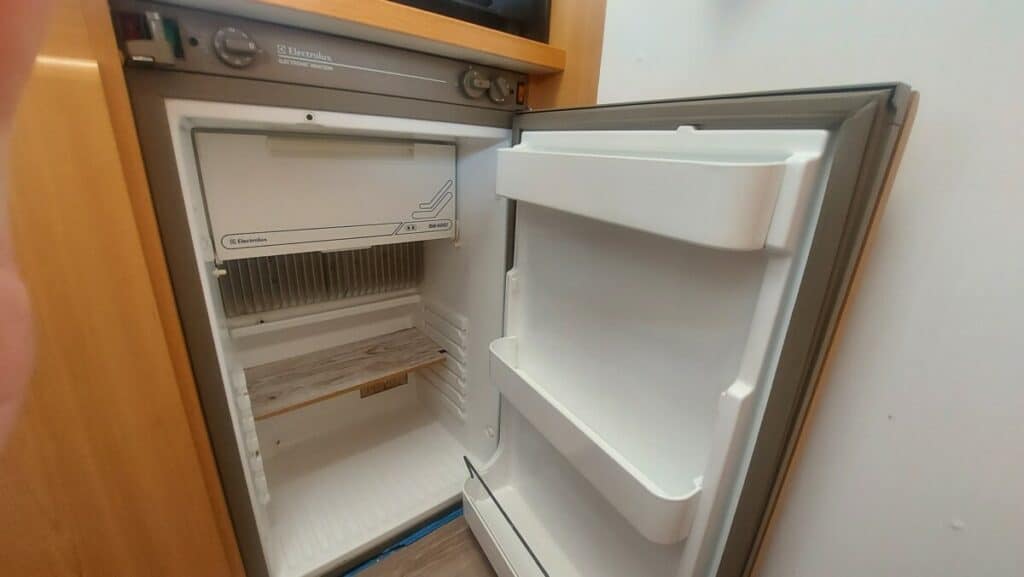
It is possible, but finding a regular fridge that fits into existing spaces in your motorhome can often be challenging. In addition, it will usually require a little rebuilding to do it perfectly.
You must measure many times to ensure that you can even get a regular fridge into your motorhome and if it fits well once inside. It is often difficult to find a standard fridge that would fit where the original fridge once was since motorhome fridges generally are smaller; this can be tricky.
Even fitting a mini fridge could sometimes be difficult since the width or height might differ slightly, forcing you to either rebuild your kitchen to fit the new fridge or search for months until you find the correct measurements. Don’t take this step lightly if you want it to be great and look original. I will instead build my fridge to get a perfect fit and also to get it running directly from 12 volts.
Things to Consider Before Changing to a Regular Fridge:
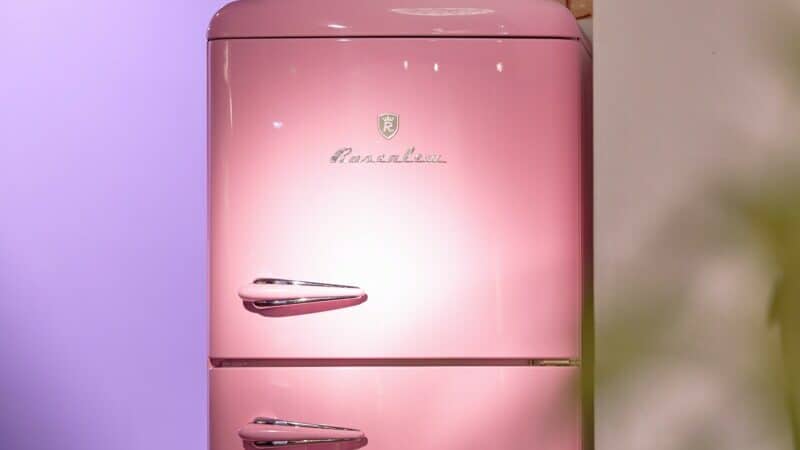
How to keep the fridge door closed while driving
You will need to build your system that keeps the refrigerator door closed while moving so everything inside the fridge won’t fall out in the first turn. Unfortunately, it already happens for most of us now, even though we have a system to keep it closed in the original fridges.
Compare prices and functions with specialized 12-volt compressor motorhome fridges.
Once you have found a regular fridge that you would want to use, compare the prices with a similar-sized motorhome, RV, or caravan fridges that are powered directly on 12 volts; this way, you would not need an inverter and get way lower energy consumption if you choose a 12-volt compressor fridge. However, those that run on propane/gas will consume even more energy than a regular fridge. Those are called absorption fridges and are to avoid if you want to run it via the battery.
Will it fit?
As mentioned before, will you even be able to get it inside, and do you have a good space that won’t require too much refitting and changes?
How will you use it, and what type of power source do you use?
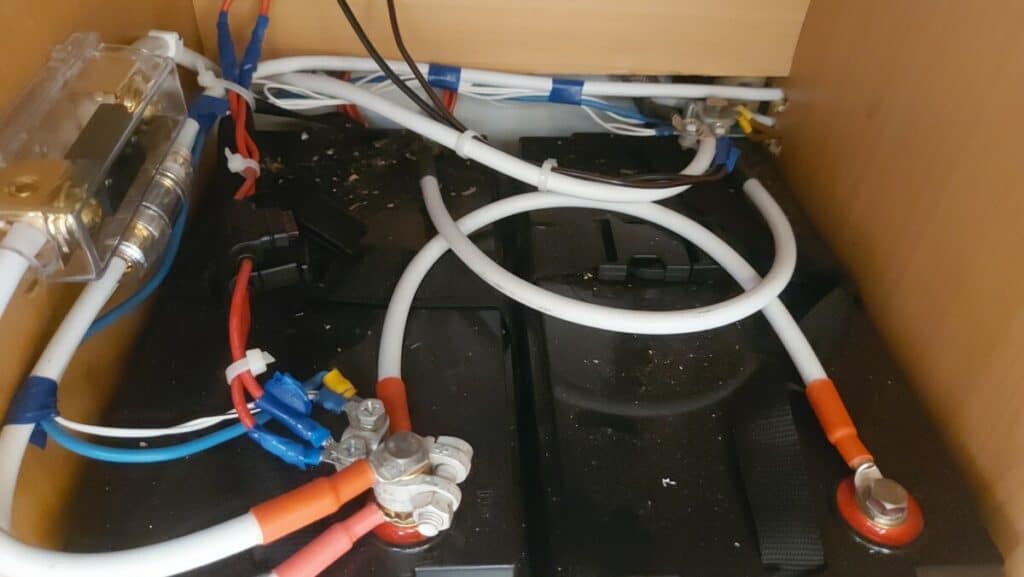
Is a regular fridge the best solution for you? Is it suitable for your needs? You may need to change your electrical system to keep it running as you want. On the other hand, it may be the perfect fit if you already have lots of solar panels and a good-sized battery bank with an excess of energy you want to use while boondocking.
Maybe you already have an inverter but a smaller battery bank and close to no solar panels, but you mainly stay at campsites or with an electrical hookup; it could also be perfect for you. There are a couple of things to consider to determine if it suits you, but you can make it work with a regular fridge if you want to.
If you have decided to install a regular fridge or are more curious about the installation process, I have made another article about installing a regular fridge in a motorhome in 9 simple steps that you can check out.
